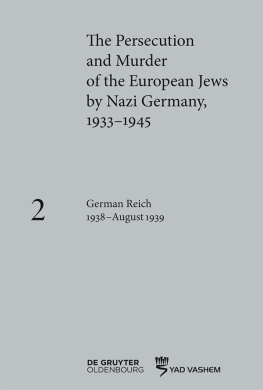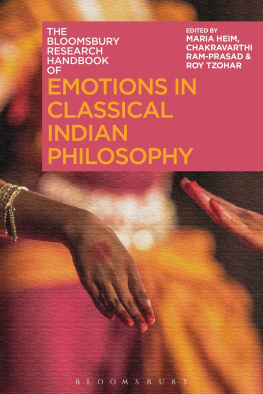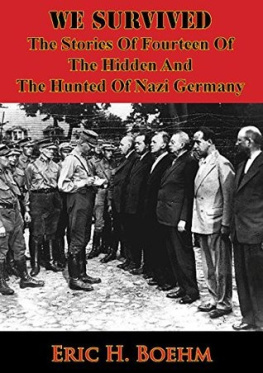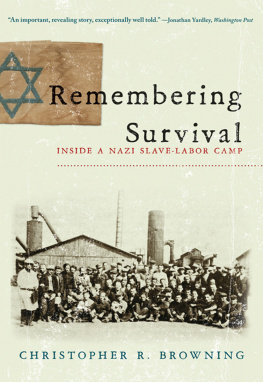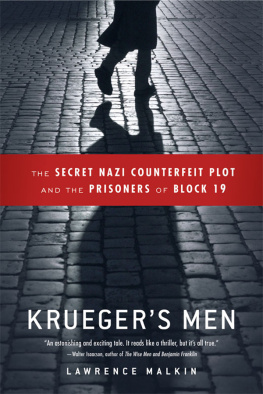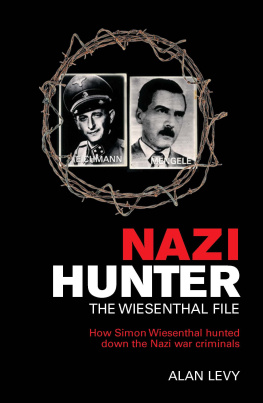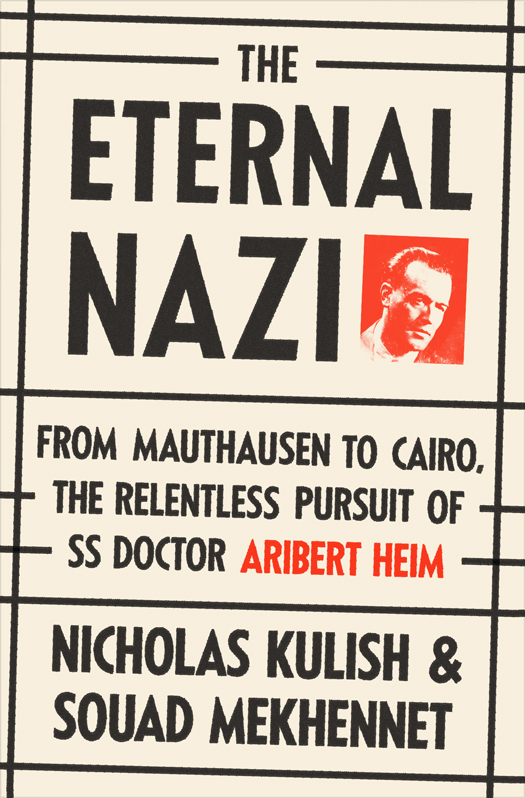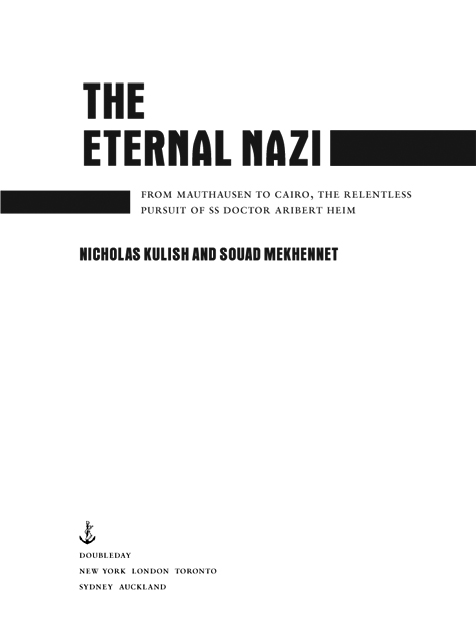ALSO BY NICHOLAS KULISH
Last One In
ALSO BY SOUAD MEKHENNET
Die Kinder des Dschihad: Die neue Generation des islamistischen Terrors in Europa (with Michael Hanfeld and Claudia Sautter)
Islam (with Michael Hanfeld)
Copyright 2014 by Nicholas Kulish and Souad Mekhennet
All rights reserved. Published in the United States by Doubleday, a division of Random House LLC, New York, and in Canada by Random House of Canada Limited, Toronto, Penguin Random House companies.
www.doubleday.com
DOUBLEDAY and the portrayal of an anchor with a dolphin are registered trademarks of Random House LLC.
Jacket design by Eric White Jacket photograph AP Photo/HO/LKA Baden-Wuerttemberg
LIBRARY OF CONGRESS CATALOGING-IN-PUBLICATION DATA
Kulish, Nicholas.
The eternal Nazi : from Mauthausen to Cairo, the relentless pursuit of SS doctor Aribert Heim / Nicholas Kulish and Souad Mekhennet. First Edition.
pages cm
1. Heim, Aribert, 19141992. 2. War criminalsGermanyBiography. 3. PhysiciansGermanyBiography. 4. Mauthausen (Concentration camp) 5. Human experimentation in medicineGermanyHistory20th century. 6. World War, 19391945Atrocities. 7. Fugitives from justiceGermany. 8. Fugitives from justiceEgypt. I. Mekhennet, Souad. II. Title.
DD247.H3543K85 2014
943.086092dc23
[ B ] 2013034604
ISBN 978-0-385-53243-3 (hardcover) ISBN 978-0-385-53244-0 (eBook)
v3.1
CONTENTS
PROLOGUE
The black-and-white photograph is crossed with lines from two days of folding and unfolding. It has turned gray around the edges from the perspiration on the hands of the vendors who looked at it. Dozens grasped the picture, pulled it closer to examine the face of the middle-aged European man staring into the camera with a hint of a smile. The photograph so far has earned mostly puzzled looks and the same probing question. Why, they ask, pointing at the enlargement of an old passport picture, why are you looking for him?
No one on the streets of Cairo recognized him, but Egyptians love a good story almost as much as they love a good joke. They have long exported their soap operas around the Middle East and beyond because they know a good adventure, romance, or mystery when they see one. Maybe, they say, it is a search for a lost father or more likely someone who has failed to pay a debt. Perhaps it is even trouble with the law. This is Cairo in 2008, and there are plainclothes security officers on most every block.
The picture came with a tip, to look for a hotel in the neighborhood of al-Azhar, but at a dozen small hotels managers and clerks give the same answer. We dont know him. Finally, one man, after a question or two, has an idea. There is a place that used to be a hotel that sometimes put up foreigners. Its on Port Said Street, not far from the overpass.
The neighborhood is named after al-Azhar mosque, built in the tenth century and one of the preeminent centers of Islamic learning in the world. With its five minarets the mosque may reflect the glories of heaven, but the air on Port Said Street is acrid from burning garbage and the tangy scent of meat hung a little too long in front of butcher shops. A postwar block of concrete rises nine stories, a dull tan color except for green or blue shutters dotting it here and there, failing entirely to cheer up its appearance. Though no longer in business, the Kasr el-Madina Hotel still announces itself with large letters, but one arm of the K in Kasr has broken off, as has half of the H in Hotel.
Two men in the dark former lobby are deep in conversation, but they stop to answer the strangers question. One of them, Abu Ahmad, says he knows the owners of the hotel. I have been here for many years and used to help out in the hotel from time to time, he says. He takes the black-and-white portrait. I know this man, he says. Tears start to fill his eyes. This is the foreigner who used to live upstairs. This is Mr. Tarek, he says. Tarek Hussein Farid.
Abu Ahmad gladly tells what he knows of the foreigners story but insists that Mahmoud Doma, the son of the hotels former proprietor, knows far more. After a quick series of calls he has Domas number. Hello? a deep voice answers the phone. I am Mahmoud, yes. What do you want? he asks. When he hears the name Tarek Hussein Farid, he says, Amu, Arabic for uncle.
A few days later, the incessant noise of Cairo traffic infiltrates a womens clothing shop run by the Doma family. Mahmoud Domas brother opens up an old attach case. The leather of the briefcase is coated with dust. The clasps are rusted almost completely shut. It is stuffed full of documents, some important records and others just the magazine clippings of an avid reader. There are letters in German, English, and French written in blue ink on yellowish paper. There are applications for residency in Egypt and transfer slips from the National Bank of Egypt. There is also a copy of a last will and testament dividing property between two sons.
Many of the news clips are about Hitler and Nazism, as well as a great deal on Israel. Near the bottom of the case are several copies of a photograph showing rows and rows of white crosses outside a concentration camp. Impassioned handwritten pages describe and then refute accusations of the most brutal crimes committed at the camp, claims of execution, vivisection, and decapitation. Several names are mentioned again and again: Kaufmann, Sommer, Lotter, Kohl, and Simon Wiesenthal, who gained fame in the 1960s for his pursuit of Nazi war criminals.
A Ferdinand Heim or an Aribert Ferdinand Heim has signed much of the correspondence. It is this name, Aribert Ferdinand Heim, that resonates in much of the world as Tarek Hussein Farid does not. Aribert Heim is not just the name of a convert to Islam living out his days quietly in an inexpensive hotel, playing games with children, reading books, and taking long walks around the city. Heim was a physician with Hitlers elite Waffen-SS, a concentration camp doctor, and an accused murderer. He is a phantom, a man sought by investigators for war crimes since 1946.
At the close of the war, investigators barely knew who Aribert Heim was. At most he was considered a small fish, not one of the architects of the Holocaust like Adolf Eichmann or a leading practitioner of deadly Nazi pseudoscience like Josef Mengele, just one of tens of thousands who worked in the concentration camps and death camps overseen by the SS. Yet somehow over the course of decades, as those men went to the gallows, repented, or died undiscovered, Heim grew in stature, at last becoming the worlds most wanted Nazi war criminal.
Heim was an Olympic-caliber athlete, a former member of Austrias national ice hockey team. He was a physician, one of the legions of SS doctors who perverted the science of healing into the science of death. In one of the only two photographs investigators had of Heim, the handsome doctor was wearing a tuxedo. His last known residence was the sparkling casino town of Baden-Baden, where he lived in a magnificent white villa. Law enforcement discovered that he had left behind a fortune worth more than $1 million in a bank account in Berlin.
In 2007 a retired colonel of the Israel Defense Forces, Danny Baz, claimed to have been a member of a secret cell of Nazi hunters known as the Owl that tracked down the elusive Heim, who, he claimed, was the leader of a shadowy, powerful organization of former SS officers. After a firefight in upstate New York, Baz said, he recovered a waterproof briefcase containing guns, banknotes, diamonds, and fake passports. In the inner compartment, a splendid Luger; the grip is made of ivory and the middle, encrusted with gold and silver, is engraved with a swastika with, underneath it, the name of the guns owner: Aribert Heim.



